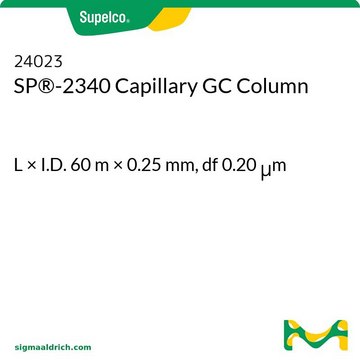About This Item
Recommended Products
vapor density
2 (vs air)
Quality Level
vapor pressure
184 mmHg ( 20 °C)
Assay
≥99.8%
form
liquid
expl. lim.
13.2 %
technique(s)
HPLC: suitable
impurities
≤0.0005% non-volatile matter
≤0.002% free acid (as CH3COOH)
≤0.1% water (Karl Fischer)
transmittance
330 nm, ≥15%
335 nm, ≥50%
340 nm, ≥80%
350 nm, ≥98%
refractive index
n20/D 1.359 (lit.)
pH
5-6 (20 °C, 395 g/L)
bp
56 °C/760 mmHg (lit.)
mp
−94 °C (lit.)
density
0.791 g/mL at 25 °C (lit.)
format
neat
SMILES string
CC(C)=O
InChI
1S/C3H6O/c1-3(2)4/h1-2H3
InChI key
CSCPPACGZOOCGX-UHFFFAOYSA-N
Looking for similar products? Visit Product Comparison Guide
General description
Application
Packaging
Other Notes
- The article number 34850-4X2.5L will be discontinued. Please order the single bottle 34850-2.5L which is physically identical with the same exact specifications.
- The article number 34850-6X1L will be discontinued. Please order the single bottle 34850-1L which is physically identical with the same exact specifications.
Signal Word
Danger
Hazard Statements
Precautionary Statements
Hazard Classifications
Eye Irrit. 2 - Flam. Liq. 2 - STOT SE 3
Target Organs
Central nervous system
Supplementary Hazards
Storage Class Code
3 - Flammable liquids
WGK
WGK 1
Flash Point(F)
1.4 °F - closed cup
Flash Point(C)
-17.0 °C - closed cup
Choose from one of the most recent versions:
Already Own This Product?
Find documentation for the products that you have recently purchased in the Document Library.
Articles
Nonylphenols (NP) are ubiquitous substances that have been detected in highly diverse foodstuff. As breakdown products of nonylphenol ethoxylates, NP could end up in the aquatic environment. This article presents a rapid method for NP detection in surface water by planar solid phase extraction – planar yeast estrogen screen (pSPE-pYES).
Our team of scientists has experience in all areas of research including Life Science, Material Science, Chemical Synthesis, Chromatography, Analytical and many others.
Contact Technical Service






